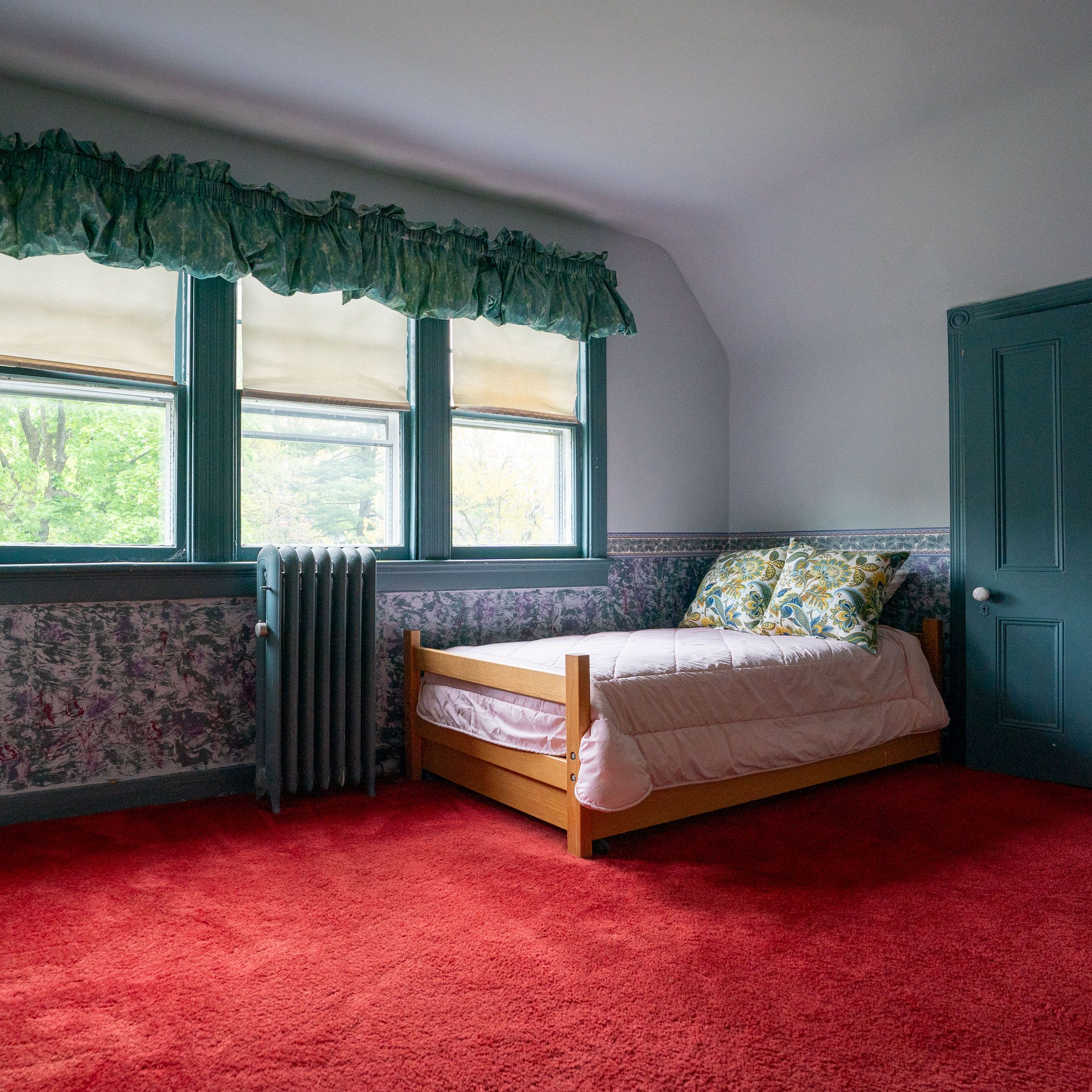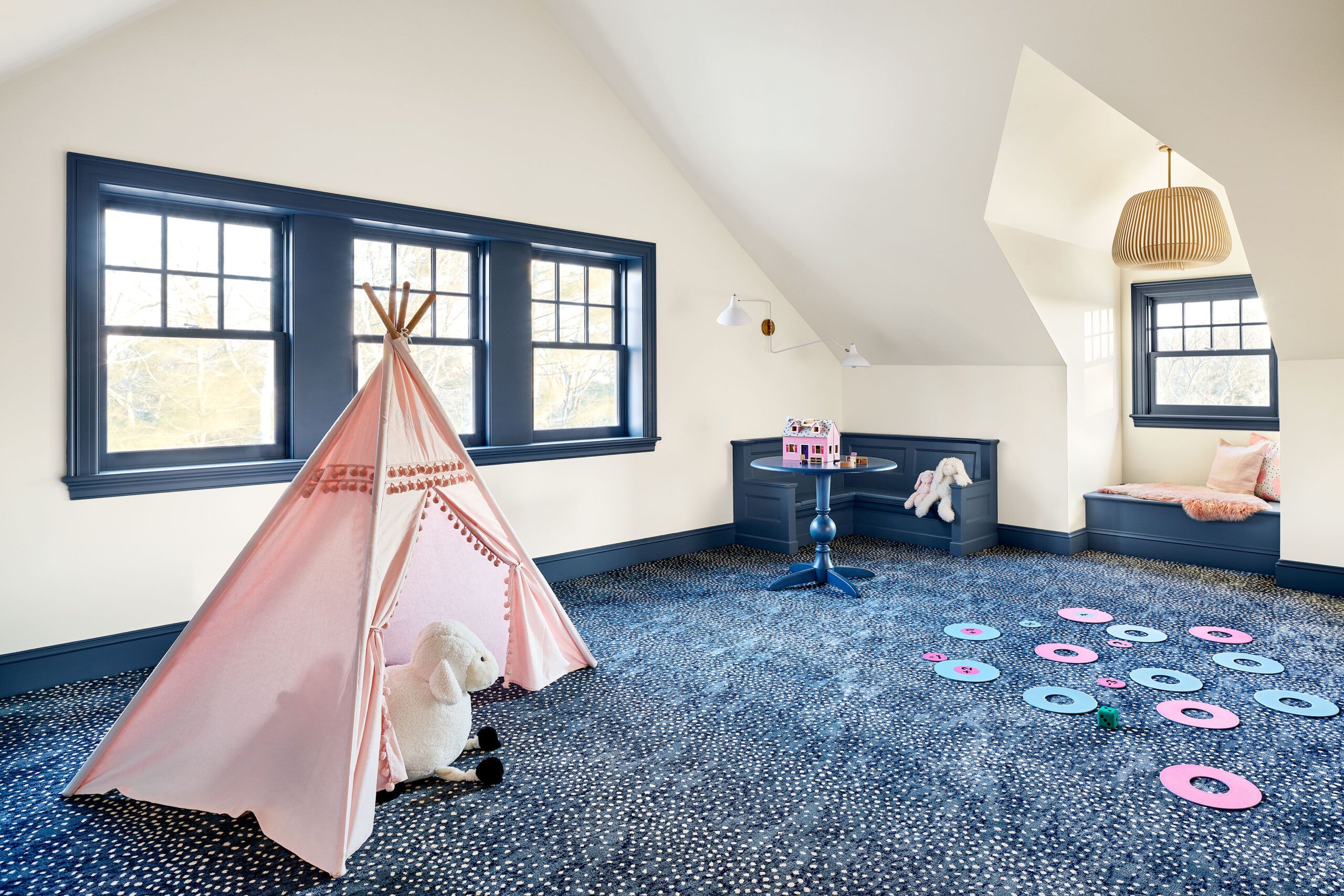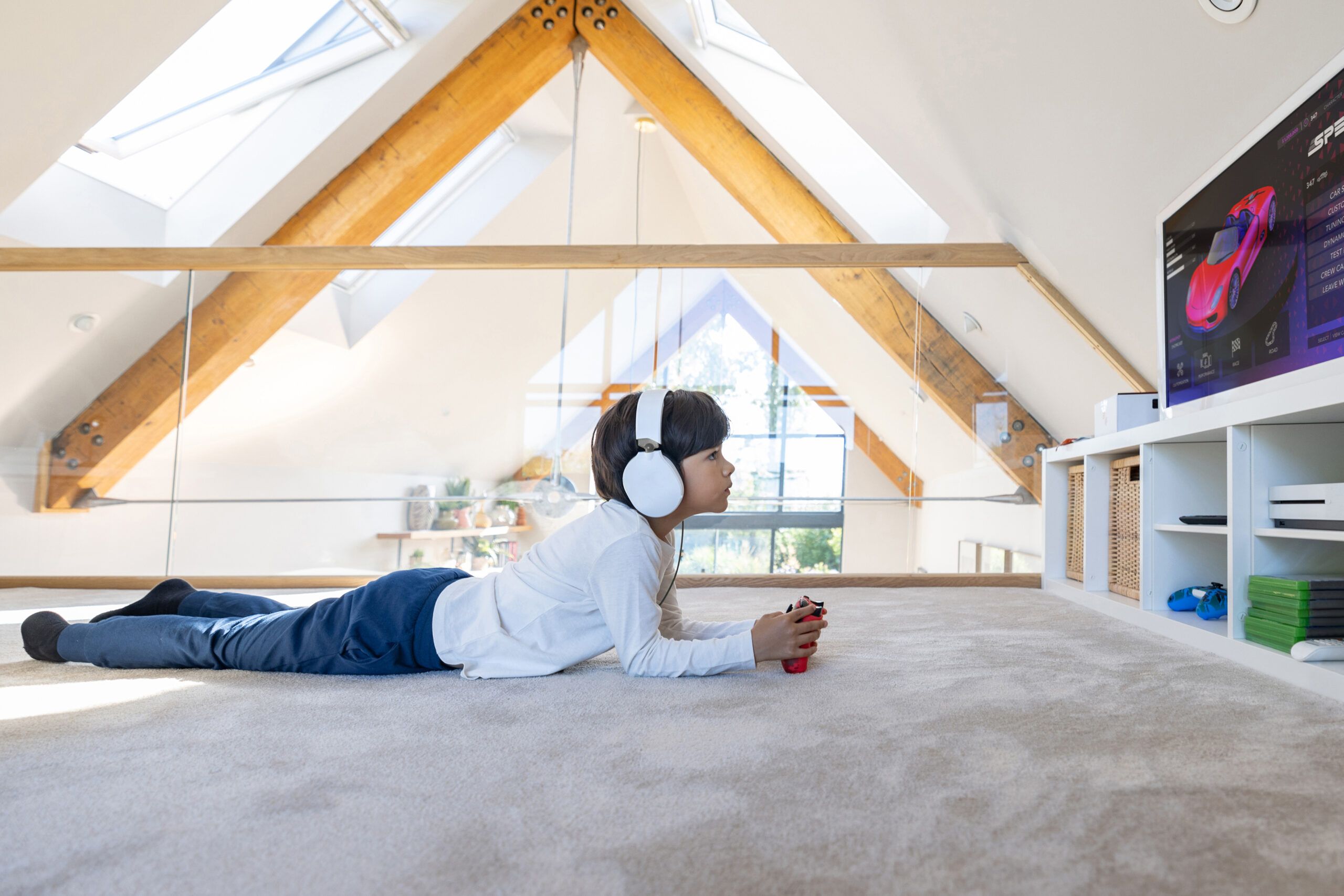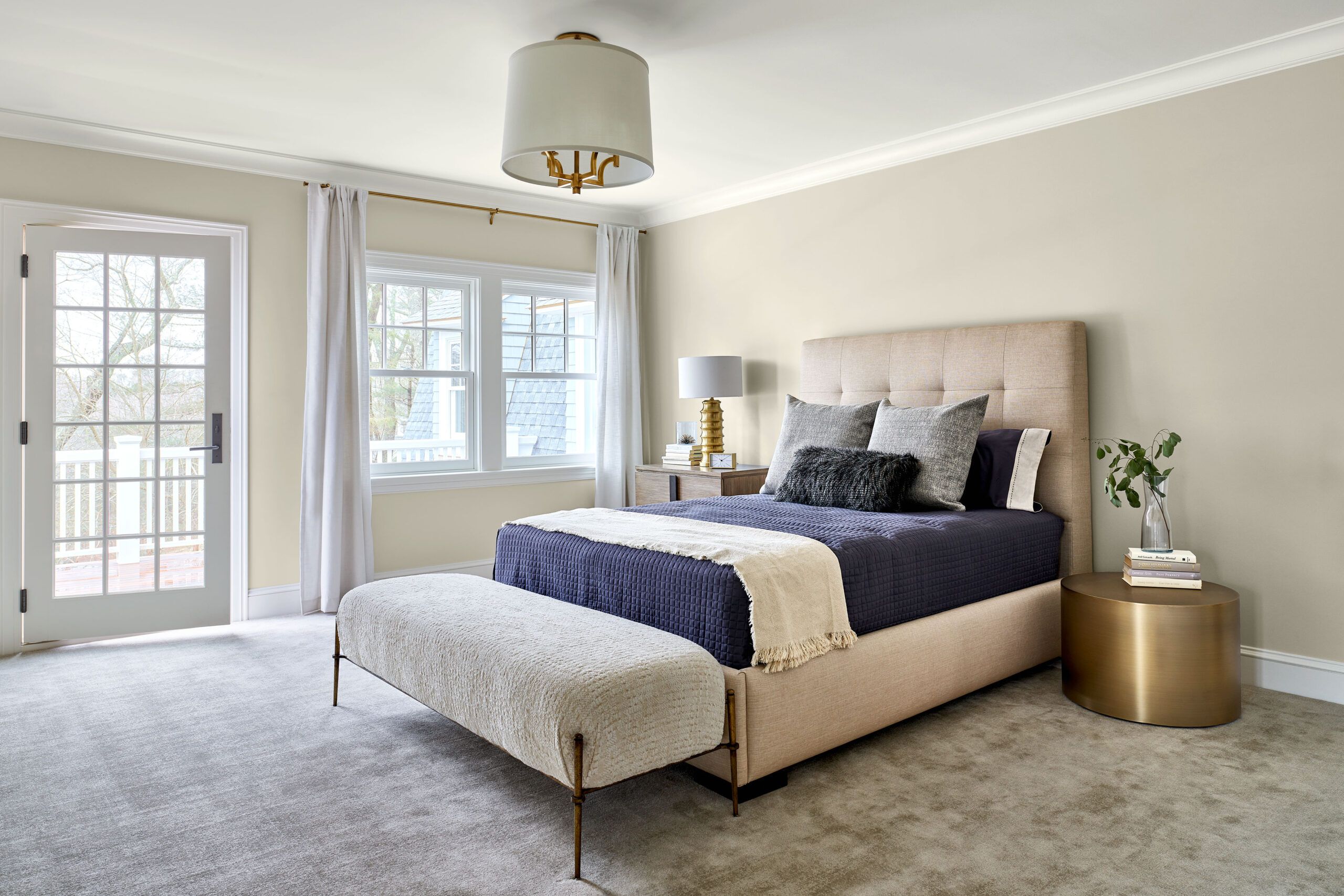Wall-to-wall carpeting has not been a common home flooring option for many years as many homeowners switched to the convenience of hardwood or tile. However, carpet is regaining popularity and shouldn’t be dismissed as a thing of the past. Carpeting brings luxurious comfort, warmth, sound absorption, and cushioning to a space in a way that hardwood and tile cannot. Before trying it out for yourself, here are some things you should know about wall-to-wall carpeting first.
Is Wall-to-Wall Carpet Out of Style?

Carpet was one of the most in-demand flooring types in the 1950s. Due to various trends in successive decades, its popularity waxed and waned in the years following the 1950s. By the early 2000s, carpet finally took the back seat to a much more popular flooring type: hardwood.
While flooring types like hardwood and ceramic tile are still more popular options, current carpeting trends show that they are coming back, particularly in specific rooms of the house. The living room and family room may not be the focal point for carpet in the way it was decades ago. However, other areas are starting to see the re-emergence of wall-to-wall carpet, including primary bedrooms and children’s rooms.
Why do Homeowners Want Wall-to-Wall Carpeting Again?
Now that many people have tried other types of flooring, including hardwood, stone, tile, and vinyl, there seems to be a revival of wall-to-wall carpeting. There isn’t quite a surge in this phenomenon, but its popularity growth is slow and steady.
Much of the reason carpet is getting a second chance is that there are now many more color and material options available, and styles look much tidier and more modern than carpets of the past. Also, many people who abandoned carpets may not have realized how comfortable carpets can be underfoot compared to other flooring types, especially in rooms meant for relaxing like bedrooms and family rooms.
Advantages and Disadvantages of Wall-to-Wall Carpeting
The pros
Safety
One of the most significant benefits of wall-to-wall carpeting is that it’s less likely to cause slips and falls than more slippery flooring types or even rugs, which can sometimes slide or be trip hazards. And in the case that a fall does occur, carpet provides a good cushion to lessen the impact. This is especially a concern for small children, seniors, or those with mobility issues.
Comfort
Carpeting provides more cushion and softness, making walking, sitting, or lounging on the floor enjoyable. Today’s plush carpets in modern fibers give homes a sense of luxuriousness.
Insulation
One drawback to flooring types like wood and tile is that they can be quite cold to walk on barefoot. Wall-to-wall carpeting not only keeps the floor from being cold, but it acts as a layer of insulation to prevent more heat from escaping your home and helps to absorb sound as opposed to hard flooring which can amplify noise.
Cost-effective
In comparison to the cost of other flooring types, carpeting is one of the most affordable. For example, the low-end carpet costs almost six times less than natural stone and hardwood.
| Flooring Material | Cost per Square Foot |
| Natural stone (marble) | $3–$20 |
| Ceramic tile | $5–$10 |
| Solid hardwood | $3–$10 |
| Vinyl | $2–$7 |
| Laminate | $1–$4 |
| Carpet | $0.49 – $21 |
The cons
Expensive installation and maintenance
Carpet pricing itself per square foot may offer savings, but installing wall-to-wall carpet may be expensive and labor-intensive. The precision and manpower needed to ensure that the underlayment and the carpet are installed properly can be demanding.
In addition to a costly installation, you may notice the cost quickly add up when maintaining your carpet. Professional cleaning is recommended every 18 months. DIY carpet cleaning also involves investing in a high-quality vacuum cleaner to remove dirt and small particles from your carpet. Regular vacuuming at least once a week will help keep dust under control. You may also want to consider purchasing a carpet cleaner to shampoo the carpet yourself and help tackle spills.
Allergens
Of all the different flooring types, carpet can cause the most problems for those suffering from allergies and asthma. It attracts and absorbs dust, dirt, small pests, and other things that can be a perfect storm for those with respiratory problems.
What to Consider Before Installing Wall-to-Wall Carpeting

Costs
Carpet pricing will be one of the most important factors to take into account. Wall-to-wall carpeting prices vary according to brand, type, material, and more. Carpet may be as inexpensive as $0.50 per square foot and upwards of $21 per square foot. How much you pay will depend on various factors, including the product’s pattern and texture and features such as stain and moisture resistance.
Another financial component to factor in is the level of comfort you prefer provided by carpet padding. Ranging in cost from $1 to $4 per square foot, carpet underlay comes in several materials and thicknesses, usually between 1/4 and 7/16 inches. Whether it’s the softness underfoot or the added stability and durability it provides, carpet padding enhances the overall comfort of your carpeted space, making it a worthwhile investment.
In addition to the carpet and padding, you’ll need to account for the labor cost involved in the installation process. The installation could range from $400 to $7,000, depending on the room size. DIY carpet installation can help you save on installation costs. Also, working with a carpet retailer or big-box store that offers free or discounted installation when you purchase a carpet could help you save.
Type of carpet
Here are the most common carpet fiber types you’ll come across when shopping for a new carpet.
- Nylon: best for high-traffic areas such as living rooms, hallways, and stairs
- Polyester: best for rooms with minimal foot traffic but potential for spills, such as bedrooms and dining rooms
- Triexa: best for high-traffic areas traversed by children and pets because it is stain-resistant and easy to clean
- Wool: best for high-traffic areas such as living rooms and entryways and is ideal for those who suffer from respiratory issues
- Polypropylene (also known as olefin): best for busy households with children and pets because it’s resilient, stain-resistant, and handles wear and tear well
Carpet pile
There are three carpet pile types to choose from: cut, looped, and a combination of cut and looped. Cut pile refers to carpet fibers in which the loops have been cut, leaving a very soft, plush surface. It comes in many various lengths and feels, including saxony, plush, textured, frieze, cable, and shag.
Loop pile carpet, also called Berber or uncut pile, has a much shorter pile than cut pile carpet and the fibers have looped ends. It’s durable and works well in hallways, offices, and areas considered high-traffic areas of the home. However, it is not very soft or padded.
The pile and loop type of carpet incorporates the both of the above types in a specialty design that combines textures to give the carpet a visually aesthetic appeal.
Also factor in the pile height, which represents the length of the carpet fibers. Low-pile carpets are the flattest and the most durable of the three, while high-pile carpets are the longest, fluffiest, and shaggiest, hence, best for low-traffic areas. Medium-pile is in between and works for moderately busy rooms.
Health issues
When shopping for wall-to-wall carpeting, it is essential to keep in mind that most carpets can attract lots of dust and dander. The dirt and debris may get trapped inside the carpet layers, which can become airborne as people traverse the carpet or while vacuuming. This dirt can be hazardous for those who suffer from respiratory problems. If you or your family have trouble with allergies or asthma, installing carpet may not be the best flooring solution. The best choice would be a low-pile, natural wool rug.
VOCs
Synthetic carpets, like those made of nylon, polyester, polypropylene (olefin), may emit an unusual smell for several weeks, but it may be most potent for the 72 hours after installation. This odor is from volatile organic compounds (VOCs) emitted from the carpet because of the synthetic fibers, latex or PVC backing, dyes, solvent-based adhesives, and chemical treatments, like stain repellents. VOCs may cause headaches, nausea, and respiratory issues, as well as the potential for more serious long-term effects.
If this is concern, you can limit your exposure to VOCs by choosing a carpet that’s made of a natural fiber such as wool, and opting for carpet padding made of wool or felt. Even on synthetic carpets and padding, you can look for the Green Label Plus, which certifies that the product has low emissions of VOCs.
Replacement
It’s a good idea to keep in mind that carpet will need replacement much more often than any other flooring type. If the home you’re living in is your forever home, replacing carpet can become quite expensive since it will need to be replaced on average every five to 15 years.
| Flooring Type | Minimum Life Expectancy |
| Hardwood | 100+ years |
| Carpet | 5-15 years |
| Stone | 100+ years |
| Laminate | 15 years |
| Vinyl | 25 years |
Frequently Asked Questions
Are there eco-friendly wall-to-wall options?
Yes. Wool is the most environmentally friendly carpet type because it doesn’t contain as many VOCs, chemicals and synthetic dyes as many other types. Certain brands like Earth Weave and Nature’s Carpet are good choices if you’re looking for sustainable, low-VOC options made of natural fibers.
What are the best carpet options if I have pets and children?

Look for a stain-resistant, snag-free carpet that’s durable enough to withstand the daily abuse from kids and pets. Nylon, polyester, polypropylene (olefin), and triexa are good options.
Can carpet be installed over other flooring types?
Yes. One advantage of carpet is that you don’t have to remove the existing flooring or fortify the subfloor, as you may have to do with other flooring types. With the exception of removing the existing carpeting, you or a professional installation crew can start laying down padding and wall-to-wall carpeting immediately.

